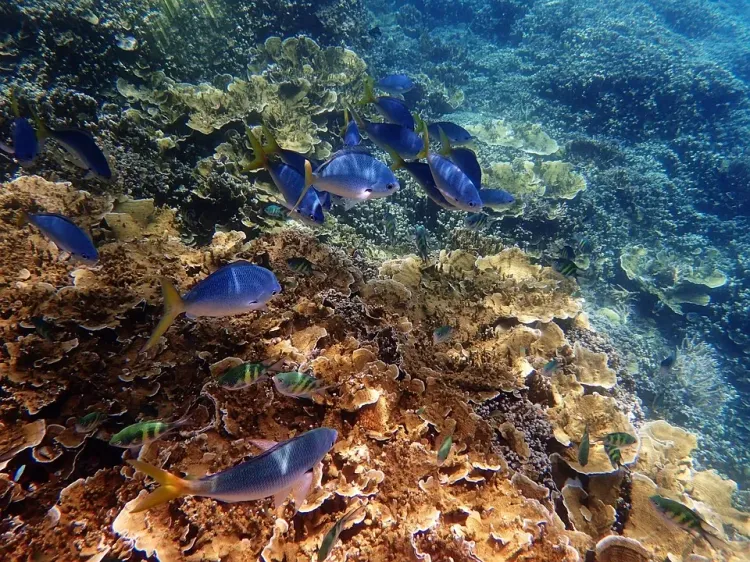Is Lizard Island on Australia's Great Barrier Reef Facing Catastrophic Coral Loss After the 2024 Bleaching?

Synopsis
Key Takeaways
- 92% coral loss recorded at Lizard Island.
- Utilization of drone technology for precise mapping.
- Coral mortality rates are unprecedented in global context.
- Urgent climate action is needed to prevent further damage.
- Monitoring will continue until 2026 for recovery signs.
Sydney, July 8 (NationPress) Lizard Island, situated on Australia's Great Barrier Reef, has experienced one of the most severe coral die-offs globally, with a staggering 92 percent of examined corals lost following the 2024 bleaching event, as indicated by recent research.
Utilizing drone imagery, researchers evaluated the Fourth Global Coral Bleaching Event of 2024 at Lizard Island, where an alarming 96 percent of corals were bleached. The average coral mortality was recorded at 92 percent, with certain locations suffering losses exceeding 99 percent, according to a statement from Griffith University in Australia.
Lead researcher Vincent Raoult from Griffith University's School of Environment remarked, "This represents one of the most significant coral mortality rates ever documented worldwide." He characterized the death rate as unprecedented, particularly noting that Lizard Island encountered less heat stress compared to other regions of the Great Barrier Reef.
Jane Williamson from Macquarie University in Sydney, the study's senior author, emphasized the crucial need for immediate climate action, cautioning that ongoing heatwaves could cause irreversible harm to coral reefs. Drone technology proved essential in accurately mapping the extensive bleaching.
After enduring multiple threats, such as bleaching, cyclones, and Crown-of-Thorns outbreaks, Lizard Island's reefs remain in a fragile state. Scientists plan to monitor these reefs until 2026 for signs of recovery, as detailed in a study published in the Coral Reefs journal, which is affiliated with the International Coral Reef Society.
The Great Barrier Reef Marine Park Authority, along with the Australian Institute of Marine Science and Commonwealth Scientific and Industrial Research Organization, released a reef snapshot earlier in April, stating, "Prolonged heat stress across the Far Northern and Northern regions of the reef led to widespread bleaching."
Coral bleaching occurs when corals, under heat stress, expel the symbiotic algae that reside in their tissues, turning entirely white. While bleaching itself is not fatal, bleached corals face a higher risk of starvation and may require a decade or more to recuperate.









